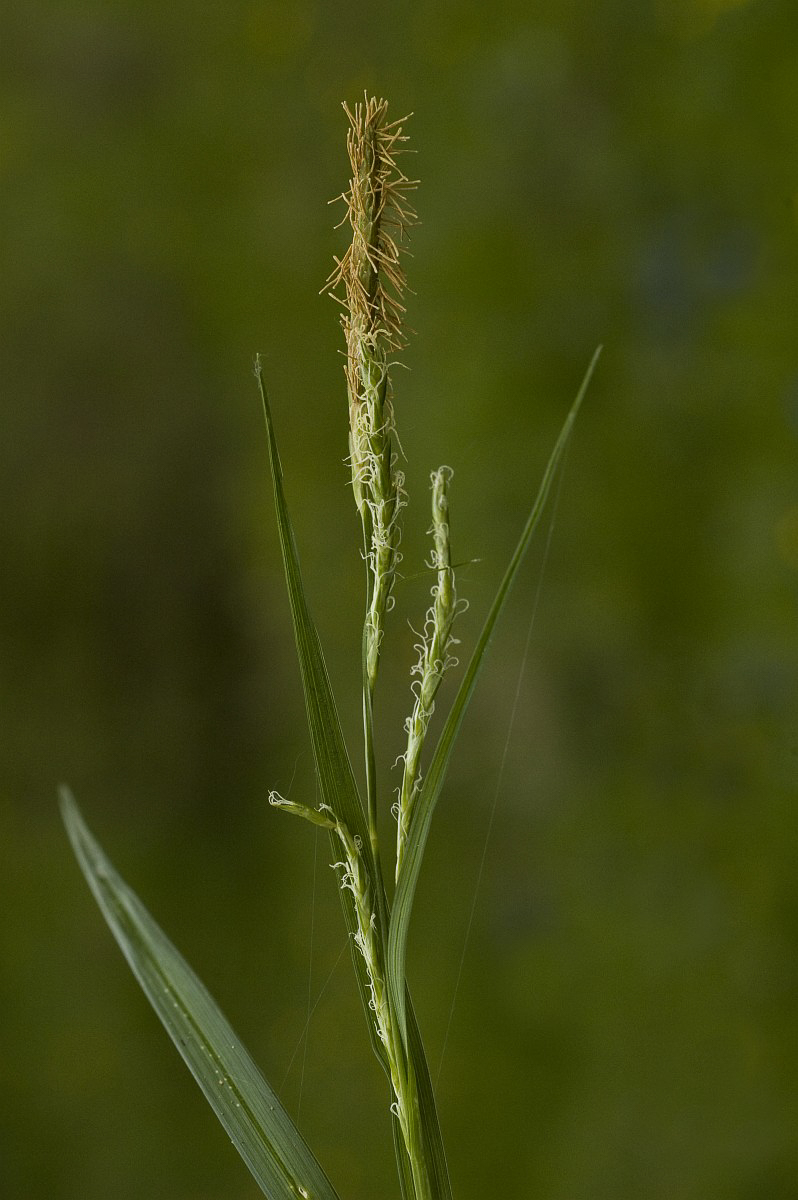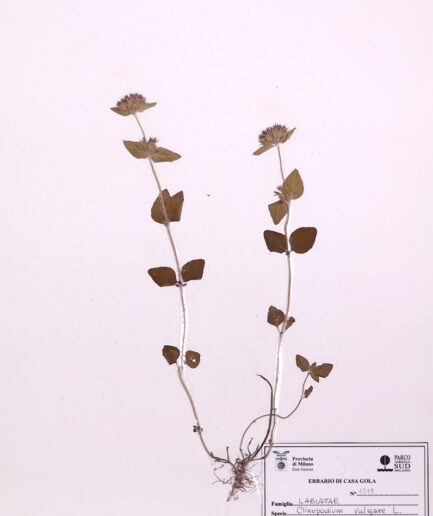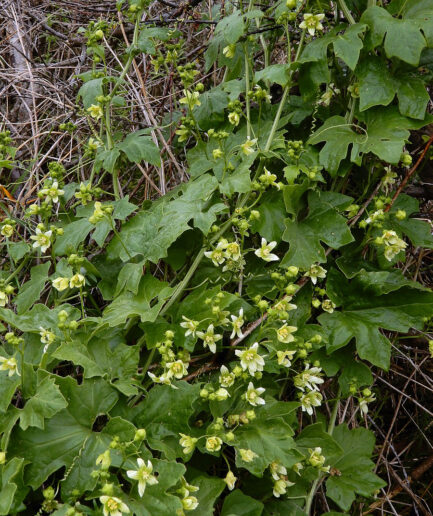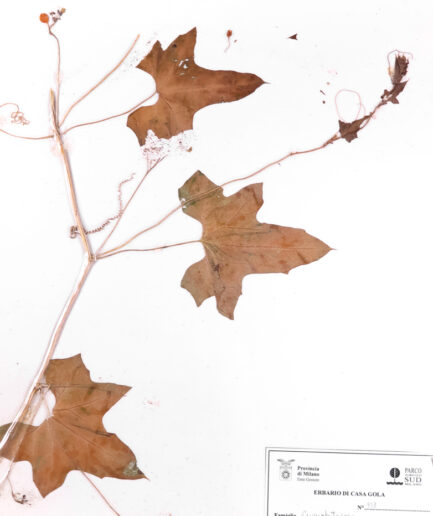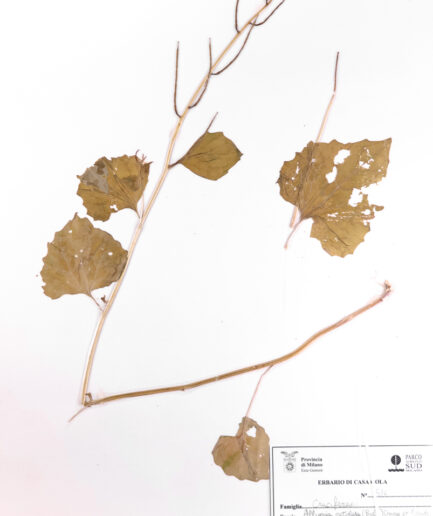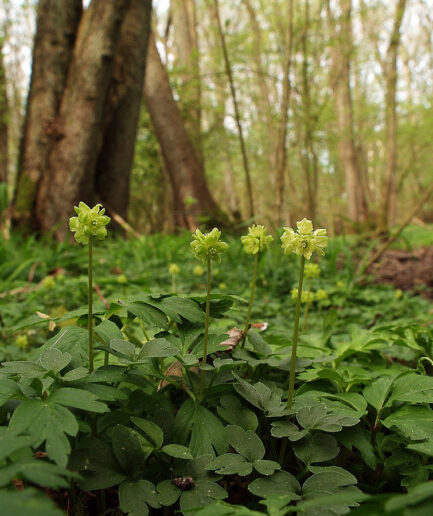Wood-sedge
Scientific Name: Carex sylvatica Huds.
Family: Cyperaceae
MORPHOLOGY
Habit and Dimensions: Herbaceous perennial plant, 20-100 cm tall; short rhizomes and small tufts characterized by 1 central flowering stem and 2 short sterile lateral shoots.
Stem: Flowering central stem, acutely triangular, smooth, robust, leafy, erect, generally curved towards the inflorescence; sterile lateral shoots, symmetric, creeping for 1-2 cm, then arcuate-erect, terminating in a tuft of leaves.
Leaves: Leaves with flat blade, soft, rough at the margins, 2-7 (12) mm wide, flexible, shorter than the stem. Basal sheaths squamiform, from hyaline to brown, entire, rarely somewhat fibrous.
Flowers: Inflorescence green, pendulous, (15) 25-50 cm long, composed of 1 (rarely 2) male spike and (3) 4-5 (6) female spikes. Male spike apical, linear, fusiform, reddish, (2) 3-6 cm long, generally inclined, sometimes with a few utricles at the base; glume 4-5 mm, oblong or obovate, brownish-hyaline, acute, subacute, or obtuse apex, rarely shortly mucronate. Female spikes cylindrical, spaced or the upper ones grouped, 3-5 cm long, less or more pendulous, on long filiform erect peduncles, then pendulous, green; glume 3-5 mm, oval, green-hyaline, sometimes very light brown, with wide scarious margin, acute or acuminate apex, shorter than the utricle. Blooms between March and May.
Fruits and Seeds: The fruits are utricles (pseudanthecia) 4-5 x 1.5 mm, glabrous, suberect, trigonous, flask-shaped, slender, greenish or light brown, with two prominent veins, abruptly narrowed into a beak of 1.2-2 mm, bifid. Achenes 2-2.5 x 0.9-1.4 mm, oval, trigonous, green or brownish.
DISTRIBUTION AND HABITAT
Present throughout Italy excluding Sicily. Common in mesophilous woods, deciduous forests, especially beechwoods, oak forests, chestnut groves. Found between 0 and 1,500 m.
Photo: Under the free license of Saxifraga and Peter Meininger, Jasenka Topic, Jan van der Straaten, Rutger Barendse.





